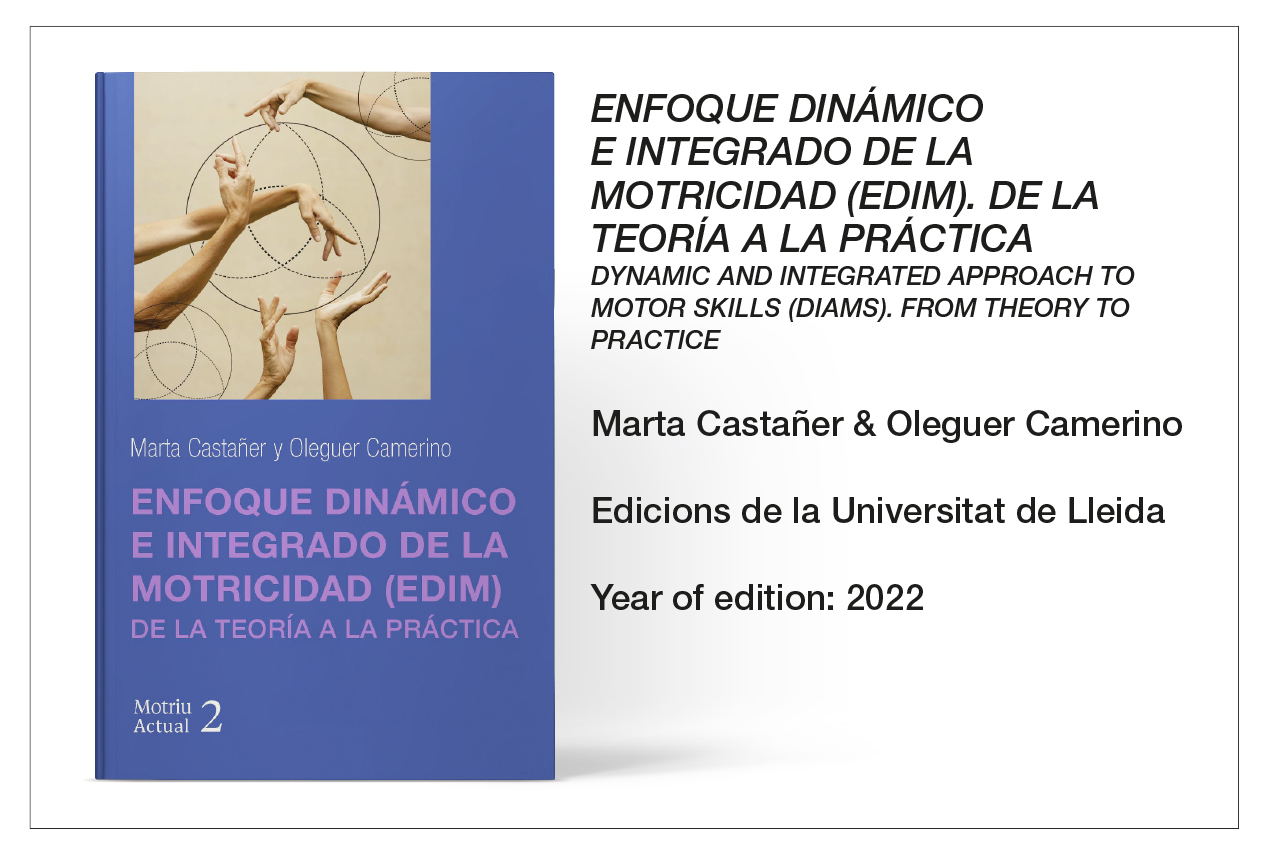Book review: Castañer, M. & Camerino, O. (2022). Enfoque Dinámico e Integrado de la Motricidad (EDIM). De la teoría a la práctica.
Cite this article
Buscà, F. (2022). Book review: Castañer, M. & Camerino, O. (2023). Enfoque dinámico e integrado de la motricidad (EDIM). De la teoría a la práctica. Apunts Educación Física y Deportes, 151, 94-95.
This book aims to defend motor activity as a source of learning and theoretical and practical knowledge. Its approach goes a step further in the difficult task of revaluing the pedagogical treatment of motor activity, in the face of the still dominant tendency to consider it as an exclusively physical exercise phenomenon. Thus, the authors are in favour of motor skills that form part of a globalising approach, which dynamically integrates the human being’s different motor skills and abilities, as a result of the authors’ definition of motor skills as: “kinesthetic manifestation of the human body which, at the same time, is meaningful, emotive and cognitive” (Castañer & Camerino, 2022, p. 15). With this approach, the authors give meaning and substance to Ommo Gruppe’s famous aphorism from the 1970s that education will always be more than physical education, although it will certainly not be complete without it.

Readers interested in the subject matter of this book will find that the structure of its content is designed to ensure an enjoyable and, at the same time, rigorous and well-founded reading, with theoretical reflections and empirical evidence, drawn from both up-to-date scientific articles and teaching practice. Likewise, the authors’ effort in selecting the substantial and necessary information to develop each of the chapters that make up the work and, above all, to resolve with precision and efficiency all those reflections or questions that may arise in order to delve deeper into each of the thematic blocks of the book should be valued.
A quick look at the structure of this work shows that the adventure of reading it begins with the proposal of a dynamic and integrated approach to motor skills (DIAMS), while at the same time presenting the initial approach and its intentions (chapter 1). After that, the journey continues with an analysis of motor skills in terms of their form, function and evolution (chapter 2). From there, the authors explore the world of motor skills. Firstly, in the perceptive-motor skills that make up somatognosia or knowledge of oneself (chapter 3) and stereognosia or knowledge of the space and time that our body occupies in the environment (chapter 4), followed by physical-motor skills (chapter 5) and ending with socio-motor skills (chapter 6). Chapter 7 closes the reading of this book by providing some reflections that are key to understanding how the motor skills and abilities described in the preceding chapters are integrated and interrelated to favour the development of intelligent motor skills and, therefore, useful and necessary to achieve a satisfactory life in full harmony with oneself, others and the world around us.
ISSN: 2014-0983
Published: January 1, 2023
Editor: © Generalitat de Catalunya Departament de la Presidència Institut Nacional d’Educació Física de Catalunya (INEFC)
© Copyright Generalitat de Catalunya (INEFC). This article is available from url https://www.revista-apunts.com/. This work is licensed under a Creative Commons Attribution-NonCommercial-NoDerivatives 4.0 International License. The images or other third party material in this article are included in the article’s Creative Commons license, unless indicated otherwise in the credit line; if the material is not included under the Creative Commons license, users will need to obtain permission from the license holder to reproduce the material. To view a copy of this license, visit https://creativecommons.org/licenses/by-nc-nd/4.0/deed.en



